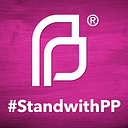Comprehensive Sex Ed Includes Queer Sexuality
By James Factora, Planned Parenthood of New York City Communications Intern
It was the first meeting of the year at my university’s reproductive justice club. We were playing one of those icebreaker games everyone loves so much, except this one was actually fun. The Condom Olympics, wherein the group was split into two teams. One by one each team member would put condoms on an array of different objects (a t-shirt, a Gatorade bottle, etc.) as fast as possible, racing against each other. Whichever team finished first won condom gold.
As we were lining up by the tables one girl cried out, “But I don’t know anything about condoms, I’m a lesbian!”
Suddenly, it was like a record scratch halted everyone and everything. I turned to her, bewildered, and said, “You can — and should — use condoms, even if you’re a lesbian.”
At the end of the same meeting, we concluded by sharing funny sex stories and when sharing mine the same girl tittered and said, “Oh no, is this about to get weird?”
I was, as I’m sure you can understand, annoyed, but I also don’t necessarily blame her for the way she acted. For one, she was a freshman. The state of American public school sex education, let alone queer-inclusive sex ed, let alone lesbian-specific sex ed, is abysmal.
Only 24 states and the District of Columbia mandate sex ed, and while the CDC has recommended topics, the actual curriculum is often up to individual school districts. This means that often, teenagers are taught that waiting until (heterosexual, monogamous) marriage is the best way to avoid contracting STIs and unintentionally becoming pregnant, even though multiple studies have shown that this approach to sex ed just doesn’t work.
And lastly, I don’t blame her because even among the queer community, folks still perpetuate retrograde attitudes about sex. Even on my supposedly progressive college campus in our supposedly progressive clubs, sex was a taboo topic, or one that people bristled at and avoided if it came up. Recently, a tweet went viral urging people not to bring their “k*nks and fet*shes” to Pride, as it could “sexualize” the event, causing tons of (rightful) backlash. It seems people are unwilling to acknowledge that we have sex at all, in favor of a sanitized, monetized, rainbow-branded image.
The truth is, there’s nothing wrong with having gay sex or acknowledging that gay sex exists. In fact, it’s imperative to not only acknowledge gay sex, but to talk about it, destigmatize it, and educate others about it. A 2015 Autostraddle survey reports that 59.61% of queer women respondents never use protection during sex. According to the same article, women who have sex with women are also more likely to contract various STIs, such as chlamydia and HPV.
How can we combat this problem? By starting these conversations about sex and sexuality when we’re young. The reality is that many queer teenagers do have sex, and they deserve to know how to have it safely.
“It’s important to teach teenagers that there is not only one valid way to have sex, nor is there only one valid sexual orientation or identity,” said Antigone Ntagkounakis, an education and training intern at PPNYC. “Talking to queer teenage girls about sex provides an opportunity for them to get concrete, credible information about their identities and sexual orientation. To ignore queer sex education, especially for teenage girls, would be to render their experiences and their own coming-of-age journey invisible, so it’s important to make sure that they, too, can feel visible, understood, and valued.”
Sites like Scarleteen and Sex Etc. aim to provide comprehensive, queer-inclusive sex ed specifically geared toward teens — and all of the content on Sex Etc. is actually sourced from teens. After all, who are better experts on teen sexuality than teens themselves?
PPNYC’s Youth Health Promoters program follows this same principle. Youth Health Promoters are highly trained youth educators who provide free workshops and accessible information in all five boroughs.
“It’s essential to speak to queer teenagers just how someone would speak to a non-queer teenager,” said Sheldon Orgill, Alex Polanco, Ashley Pena, Kurtis Smith, speaking as representatives of the Youth Health Promoters. “However it’s also important to identify things that queer teenagers go through that make their expierences unique.”
Ntagkounakis agreed. “We can talk to all kids together, therefore not forcing trans or nonbinary students to out themselves or misgender themselves by being forced to choose whether to learn about sex in traditional ‘girl’s’ and ‘boys’ groups,” she said.
Ntagkounakis also stressed that all kids, regardless of gender or sexuality, can benefit from a queer sex education. Rather than just teaching about intercourse for the sake of reproduction, inclusive and comprehensive curriculum can show young people that there’s a whole world of pleasurable sexual acts and expressions out there, and that none of it is wrong or bad — it just needs to be done safely.
In a world where our reproductive rights are continually under fire, we need to be armed with the facts. Building a solid base of queer safer sex knowledge needs to start during the teenage years, just as heterosexual sex ed does.
